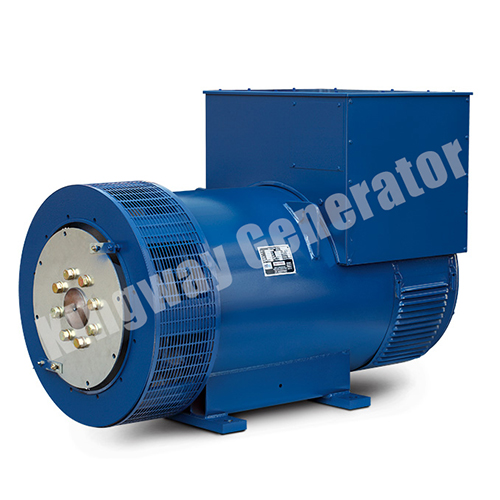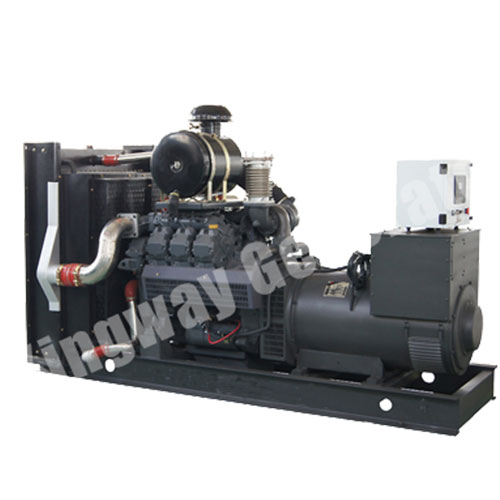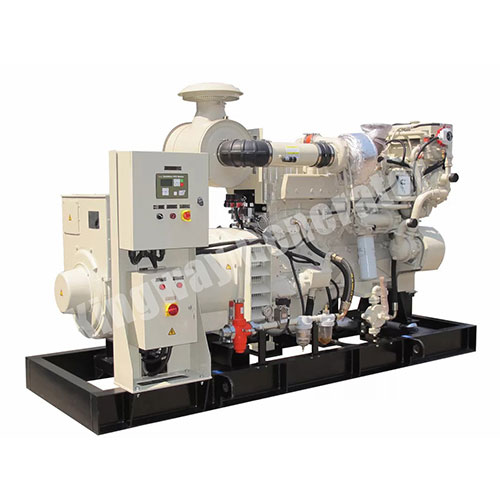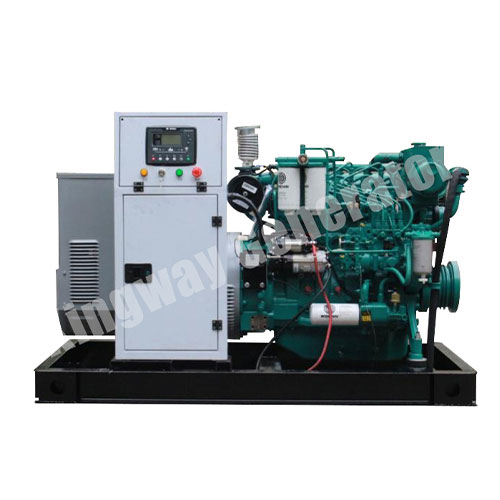Phone
+65 9825 7795A typical electrical generator consists of three major parts: the battery, a voltage regulator and an AC alternator. The alternator gets its name from the term “alternating present,” as it converts mechanical energy to electrical energy. Together with the battery, the alternator generates energy to supply electrical devices, including the lights, audio and navigation systems, and the heater. There are various varieties of alternators and applications where they are utilized, apart from in your daily life.

A synchronous generator is an additional name for the 120V AC alternator. This term is frequently utilized when describing the major supply of supplying industrial electrical energy.
Power generator stations typically consist of synchronous generators, which are connected to the grid. They’re one particular of a series of elements that generate electrical energy for residential and commercial properties.
Marine alternators, which are generally identified in yachts, are equivalent to AC alternator prices. Specially adapted for a salt-water atmosphere, they’re explosion-proof to keep away from brush sparking that could ignite gas mixtures in an equipment room. The bigger the yacht, the much more likely two or much more alternators are present to manage the heavier load.
Trains, especially electric locomotives, also use an alternator. Right here, the prime mover (a diesel engine) turns an alternator, which supplies electrical energy for the traction motors. In addition to powering trains, traction motors aid move hybrid and pure electric passenger cars.
But an additional alternator application was identified in the early days of radio transmissions. So-referred to as radio AC alternator for sale had been utilized for long-distance communication, like transatlantic dialogue. These were pricey to construct and speedily became obsolete as vacuum tube transmitters came on-line by the conclusion of WWI.

As for your personal vehicle, the alternator consists of a voltage regulator, stator, rotor and diode. On ignition, energy from the battery turns the starter, which then turns the alternator belt by way of the accessory drive, which spins the pulley on the alternator. This causes the rotor located inside the alternator to spin quickly. The rotor represents a group of magnets situated inside an outcropping of copper wires, known as the stator.
Electrical energy is generated by spinning the magnets at a high speed, which is identified as electromagnetism. The electrical energy flows from the copper wires to the diode, exactly where electricity converts from AC to DC — creating the appropriate current for the car’s battery to use. Meanwhile, the voltage regulator monitors electrical flow to the vehicle battery, shutting off the flow whenever voltage reaches a particular level, usually 14.five volts. In doing so, the regulator ensures the battery doesn’t overcharge and burn out. At the exact same time, the regulator sends existing to the battery as it is drained.
An 120V AC alternators generate most of the electric energy in the globe. Some applications for little single-phase alternators are employed as transportable generators for property emergency or to give the power for transportable energy tools on a work site, but most alternators are 3 phase generator.
Alternators operate on the exact same principle of electromagnetic induction as DC generators, but they have no commutator to change the AC developed in the armature into DC. There are two standard types of alternators: the revolving-armature type and the revolving-field type. Even though there are some single-phase alternators that are employed as transportable energy units for emergency property use or to operate power tools in a remote location, most alternators are three phase.

The revolving-armature-variety 220 volt AC alternator is the least used of the two simple types. This alternator makes use of an armature equivalent to that of a DC machine with the exception that the loops of wire are connected to sliprings instead of to a commutator. Three separate windings are connected in either delta or wye. The armature windings are rotated inside a magnetic field. Energy is carried to the outdoors circuit by way of brushes riding against the sliprings. This alternator is the least utilized because it is quite limited in the amount of output voltage and kilovolt-ampere (kVA) capacity it can create.
The spinning field-assortment alternator utilizes a fixed armature known as the stator and a turning attractive field. This style licenses bigger voltage and kilovolt-ampere appraisals in light of the fact that the outside circuit is associated legitimately to the stator and isn't steered by means of sliprings and brushes. Such an alternator is developed by putting 3 arrangements of windings 120 degree separated. The twisting of Phase 1 breezes about the prime place shaft piece.
It at that point continues 180 degree around the stator and winds about the contrary shaft piece the other way. The subsequent stage twisting breezes around the prime shaft piece directly to one side of the prime place post piece. The subsequent stage winding is twisted in a contrary way to the first. It at that point continues 180 degree around the stator lodging and winds around the contrary post piece the other way. The completion finish of Phase two interfaces with the completion end of Phase 1. The start end of Phase 3 breezes about the prime post piece to the fitting of the prime place shaft piece. This winding is twisted toward a path inverse to Phase 1 moreover. The twisting at that point continues 180 degree about the stator edge to its contrary post piece and winds about it a contrary way.
The completion end of Phase three is then associated with the completion closures of Phases 1 and 2. This sorts a wye association for the stator winding. At the point when the magnet is turned, voltage is prompted in the 3 windings. Basically on the grounds that these windings are divided 120 degree separated, the prompted voltages are 120 degree out of stage with each other.
The stator shown is drawn in a manner to aid in understanding how the 3 phase windings are arranged and connected. In actual practice, the stator windings are placed in a smooth cylindrical core without projecting pole pieces. This style offers a better path for magnetic lines of flux and increases the efficiency of the 240 volt AC alternator.

There are two main approaches of cooling alternators. Alternators of tiny kilovolt ampere rating are usually air-cooled. Open spaces are left in the stator windings, and slots are typically supplied in the core material for the passage of air.
Air-cooled alternators have a fan attached to one particular finish of the shaft that circulates air via the entire assembly.
Massive-capacity alternators are usually enclosed and operate in a hydrogen atmosphere. There are several positive aspects in utilizing hydrogen. Hydrogen is less dense than air at the very same stress. The lower density reduces the wind age loss of the spinning rotor. A second benefit in operating an alternator in a hydrogen atmosphere is that hydrogen has the potential to absorb and re move heat much faster than air. At a stress of one atmosphere, hydrogen has a distinct heat of about three.42. The distinct heat of air at a stress of 1 atmosphere is approximately .238. I.e., hydrogen has the capability to absorb approximately 14.37 occasions much more heat than air. A cutaway drawing of an alternator intended to operate in a hydrogen atmosphere.
Most big AC alternator manufacturers use an exciter that contains no brushes. This is achieved by adding a separate modest alternator of the armature sort on the identical shaft of the rotor of the larger alternator. The armature rotates among wound electromagnets. The DC excitation present is connected to the wound stationary magnets. The amount of voltage induced in the rotor can be varied by changing the amount of excitation existing supplied to the electromagnets. The output voltage of the armature is connected to a three-phase bridge rectifier mounted on the rotor shaft.
The bridge rectifier converts the 3-phase AC voltage produced in the armature into DC voltage just before it is applied to the main rotor windings. Simply because the armature, rectifier, and rotor winding are connected to the main rotor shaft, they all rotate with each other and no brushes or sliprings are required to supply excitation existing for the huge alternator. A photograph of the brushless exciter assembly. The field winding is placed in slots reduce in the core material of the rotor.
The rotor is the rotating member of the machine. It supplies the magnetism required to induce voltage into the stator windings. The magnets of the rotor are electromagnets and require some source of external DC to excite the alternator. This DC is known as excitation current. The alternator can't generate an output voltage till the rotor has been excited. Some alternators use slip rings and brushes to offer the excitation current to the rotor. A great example of this kind of rotor can be identified in the alternator of most automobiles. The DC excitation current can be varied in order to alter the strength of the magnetic field. A rotor with salient (projecting) poles is shown.